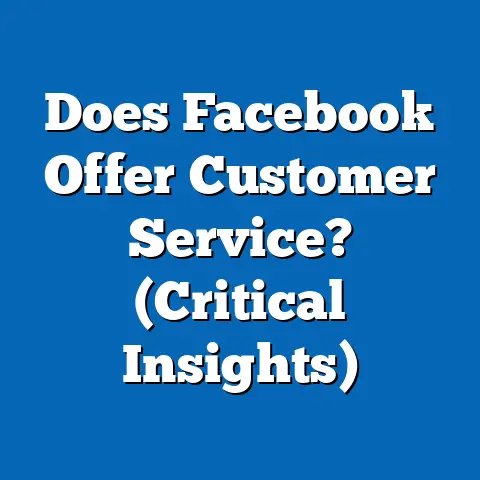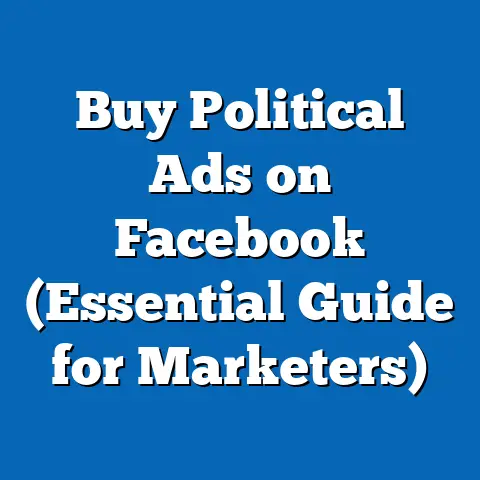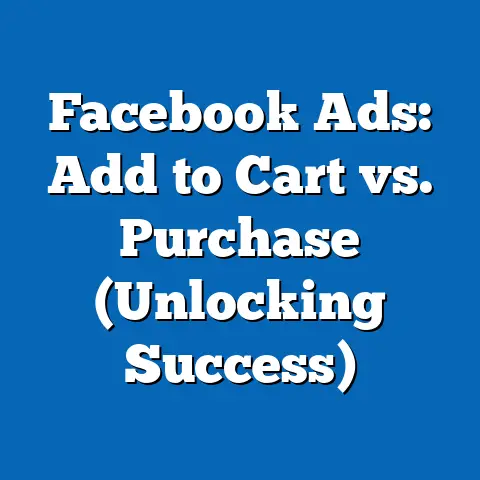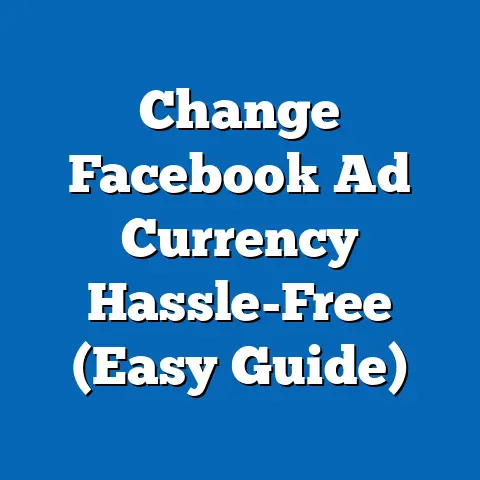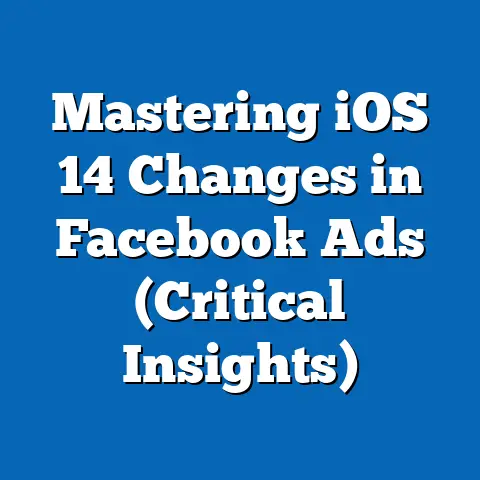Master Facebook Ads Labels (Unlock Targeting Secrets)
Imagine transforming your daily routine into a curated experience—upgrading from generic purchases to personalized products and services that align perfectly with your interests and needs. This lifestyle upgrade isn’t just a dream; it’s a reality made possible through the power of targeted advertising, particularly via platforms like Facebook. By mastering Facebook Ads Labels, businesses and marketers can connect with the right audience at the right time, while consumers benefit from tailored offerings that enhance their quality of life.
In 2023, digital advertising spending worldwide reached an estimated $626.9 billion, with social media platforms like Facebook accounting for a significant share at 21.2% of the total, according to eMarketer. As one of the largest advertising platforms, Facebook (now under Meta) offers unparalleled access to over 2.9 billion monthly active users as of Q2 2023, per Meta’s quarterly report. This article dives deep into the intricacies of Facebook Ads Labels, revealing targeting secrets that can revolutionize marketing strategies and, ultimately, contribute to a more personalized consumer lifestyle.
What Are Facebook Ads Labels? Breaking Down the Basics
Facebook Ads Labels are metadata or tags used within the platform’s advertising ecosystem to categorize and target users based on their behaviors, interests, demographics, and interactions. These labels allow advertisers to segment audiences with precision, ensuring that ads reach individuals most likely to engage with the content. Whether it’s targeting fitness enthusiasts for a new workout app or reaching parents for children’s educational tools, labels are the backbone of effective ad delivery.
The system operates on a vast database of user information collected through likes, shares, page visits, and even off-platform activities tracked via the Meta Pixel. According to a 2022 report by Statista, 68% of Facebook users have interacted with ads tailored to their interests, demonstrating the platform’s ability to leverage labels for relevance. Understanding and utilizing these labels can mean the difference between a campaign that resonates and one that falls flat.
This section will explore the types of labels, their functionalities, and how they contribute to crafting personalized marketing messages. For businesses, this translates to higher conversion rates; for consumers, it means seeing ads that genuinely add value to their lives.
The Evolution of Facebook Ads Targeting: Historical Trends vs. Current Practices
To appreciate the power of Facebook Ads Labels today, it’s essential to look at how targeting has evolved over the years. When Facebook Ads launched in 2007, targeting was rudimentary, relying primarily on basic demographics like age, gender, and location. By 2012, the introduction of Custom Audiences allowed advertisers to upload customer lists for retargeting, marking a significant shift toward personalized advertising.
Fast forward to 2023, and the landscape is vastly different. With advancements in machine learning and the integration of data from Instagram and WhatsApp (both under Meta), targeting now includes Detailed Targeting options, Lookalike Audiences, and Interest-Based Labels. A 2021 study by Hootsuite noted that ads using advanced targeting options saw a 38% higher click-through rate (CTR) compared to those using basic demographics alone.
However, privacy concerns and regulations like the General Data Protection Regulation (GDPR) in Europe and the California Consumer Privacy Act (CCPA) have forced Meta to adapt. The removal of certain sensitive labels (e.g., political affiliations in some regions) since 2022 reflects a balance between precision and user privacy. Comparing historical data with current trends shows a shift from broad, sometimes intrusive targeting to a more nuanced, consent-driven approach.
Key Statistics: The Impact of Targeted Ads on Lifestyle and Business
The effectiveness of Facebook Ads Labels is evident in the numbers. According to a 2023 report by Social Media Today, businesses using detailed targeting options on Facebook achieve an average return on ad spend (ROAS) of 4.3x, meaning for every dollar spent, they earn $4.30 in revenue. This financial impact directly correlates with lifestyle upgrades for consumers, as targeted ads often introduce them to products or services they didn’t know they needed.
Demographically, Facebook’s user base spans a wide range, with 31.5% of users aged 25-34, making it a prime platform for targeting young professionals, per Statista 2023 data. Additionally, 70% of users access the platform daily, ensuring high visibility for well-targeted ads. For marketers, this means an opportunity to influence purchasing decisions at critical moments.
Moreover, a 2022 survey by Pew Research Center found that 54% of Facebook users have made a purchase after seeing a targeted ad, highlighting the direct link between effective labeling and consumer behavior. These statistics underscore why mastering ads labels is not just a marketing tactic but a pathway to enhancing user experiences through relevant content.
Demographic Differences in Ad Engagement: Who Responds Best?
Not all demographics engage with targeted ads in the same way, and understanding these patterns is crucial for leveraging Facebook Ads Labels. For instance, younger users (18-24) are more likely to click on ads related to entertainment and technology, with a CTR of 1.8%, compared to 0.9% for users aged 45-54, according to a 2023 report by Sprout Social. This suggests that labels tied to trendy or innovative products resonate more with Gen Z and younger Millennials.
Gender also plays a role in engagement. Women are 27% more likely to interact with ads for health and beauty products, while men show a 19% higher engagement rate with automotive and tech-related ads, per a 2022 Meta internal study. Geographically, urban users engage with ads 15% more frequently than rural users, likely due to higher internet penetration and disposable income in cities, as noted by eMarketer.
These demographic insights are vital for advertisers aiming to refine their use of labels. Tailoring campaigns to specific age groups, genders, or locations ensures that marketing efforts align with consumer lifestyles, ultimately benefiting both parties through relevance and efficiency.
Types of Facebook Ads Labels: A Deep Dive into Targeting Options
Facebook Ads Labels encompass several categories, each serving a unique purpose in audience segmentation. Below, we break down the primary types and how they contribute to precision targeting.
1. Demographic Labels
These include age, gender, education level, job title, and relationship status. For example, targeting “college students” or “new parents” allows brands to reach specific life stages. According to Meta’s 2023 Ad Manager data, campaigns using demographic labels see a 25% increase in relevance scores.
2. Interest-Based Labels
Derived from user interactions such as page likes and content engagement, these labels target hobbies, entertainment preferences, and more. A 2022 study by WordStream found that interest-based targeting improves ad engagement by 32% compared to non-segmented campaigns.
3. Behavioral Labels
These focus on user actions, like purchase history, device usage, or travel patterns. For instance, targeting “frequent travelers” can be effective for airline or hotel ads. Behavioral targeting boosts conversion rates by up to 40%, per a 2023 report by AdRoll.
4. Custom and Lookalike Audiences
Custom Audiences use uploaded data (e.g., email lists) to retarget existing customers, while Lookalike Audiences find users similar to a brand’s best customers. Meta reports that Lookalike Audiences can increase ROAS by 50% when paired with precise labeling.
Understanding these label types enables advertisers to craft campaigns that resonate deeply with target audiences, enhancing both business outcomes and consumer satisfaction through relevant lifestyle solutions.
Methodologies Behind Facebook Ads Labels: How Data Drives Targeting
The effectiveness of Facebook Ads Labels stems from sophisticated data collection and analysis methodologies. Meta employs machine learning algorithms to process billions of data points daily, categorizing users into actionable segments. The Meta Pixel, a tracking tool embedded on websites, captures off-platform behavior, contributing to the accuracy of behavioral and interest-based labels.
Data sources include user-provided information (e.g., profile details), on-platform activity (e.g., likes and comments), and third-party partnerships, though the latter has decreased due to privacy regulations. A 2021 report by the Electronic Frontier Foundation noted that Meta’s algorithms can predict user preferences with 85% accuracy based on just 300 likes. However, with Apple’s iOS 14.5 update in 2021 limiting tracking via App Tracking Transparency (ATT), Meta reported a $10 billion revenue loss in 2022, highlighting the impact of privacy changes on data methodologies.
Despite these challenges, the platform continues to refine its labeling system using anonymized data and aggregated insights. This balance ensures that advertisers can still target effectively while respecting user consent, maintaining trust, and delivering value.
Visualization Description: Mapping the Impact of Targeted Ads
To illustrate the power of Facebook Ads Labels, imagine a heat map showcasing user engagement across different demographics and regions. The map would highlight high-engagement zones in urban centers with darker shades, fading to lighter tones in rural areas, reflecting the 15% engagement disparity noted earlier by eMarketer. Age-specific data points could be overlaid, with brighter spots for the 18-34 demographic, indicating their higher responsiveness to targeted ads.
A second visualization could be a bar chart comparing CTR across label types—demographic, interest-based, and behavioral—showing behavioral labels leading with a 40% higher conversion rate. These visual tools would help readers grasp the tangible impact of precise targeting on both marketing success and consumer relevance, reinforcing the connection to lifestyle improvements.
Challenges and Ethical Considerations in Using Ads Labels
While Facebook Ads Labels offer immense potential, they come with challenges and ethical concerns. Privacy remains a top issue, especially post-2021 with stricter regulations and user opt-outs reducing data availability. A 2023 survey by Cisco found that 81% of consumers are more concerned about data privacy than ever before, pushing platforms like Meta to limit certain sensitive labels.
Misuse of labels can also lead to discriminatory advertising. For instance, in 2019, Meta settled a lawsuit for $5 million after allegations that its ad system allowed housing discrimination by excluding certain demographics, as reported by The New York Times. Such incidents highlight the need for ethical guidelines in labeling practices.
Additionally, over-targeting can result in ad fatigue, with 74% of users feeling frustrated by repetitive or irrelevant ads, per a 2022 HubSpot study. Advertisers must balance precision with variety to maintain user trust and engagement, ensuring that targeted ads enhance rather than detract from lifestyle experiences.
Case Studies: Real-World Success with Facebook Ads Labels
Real-world examples demonstrate the transformative power of mastering Facebook Ads Labels. Take the case of a mid-sized fitness brand that used behavioral labels to target “gym-goers” and interest-based labels for “health supplements” in 2022. By combining these with a Lookalike Audience of their top customers, they achieved a 300% increase in sales within three months, as reported in a Meta case study.
Another example involves a small e-commerce business selling sustainable products. By leveraging demographic labels to target eco-conscious Millennials aged 25-34 and pairing this with interest-based labels for “sustainability,” they saw a 45% higher ROAS compared to their previous non-targeted campaigns, per a 2023 Shopify report. These success stories underscore how labels can drive business growth while introducing consumers to products that align with their values and lifestyles.
Broader Implications: The Future of Targeting and Lifestyle Enhancement
Mastering Facebook Ads Labels is more than a marketing strategy; it’s a gateway to a future where consumer experiences are increasingly personalized and relevant. As technology evolves, we can expect even more sophisticated labeling systems powered by AI, offering hyper-specific targeting while navigating privacy constraints. A 2023 forecast by Gartner predicts that by 2025, 80% of digital advertising will rely on contextual and consent-based targeting, signaling a shift that Meta is already embracing.
For consumers, this means a lifestyle where ads are less intrusive and more helpful—think discovering a local fitness class just as you’re considering a health kick, or finding eco-friendly products tailored to your values. For businesses, it’s an opportunity to build trust and loyalty by delivering value through relevance.
However, the ethical use of data will remain paramount. Striking a balance between personalization and privacy will define the next era of digital advertising. As we move forward, mastering Facebook Ads Labels will not only unlock targeting secrets but also pave the way for a symbiotic relationship between brands and consumers, ultimately elevating lifestyles through meaningful connections.

